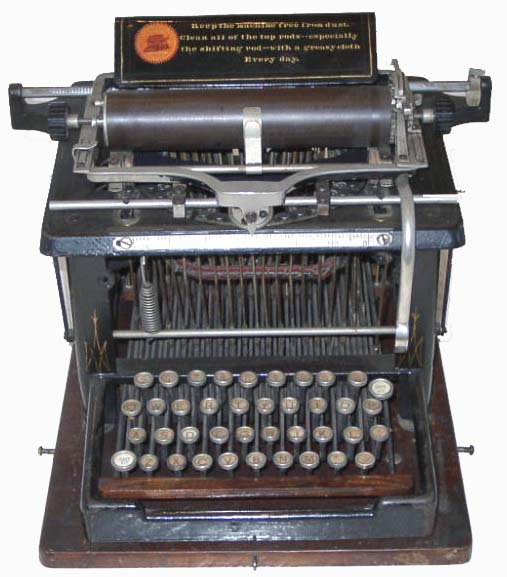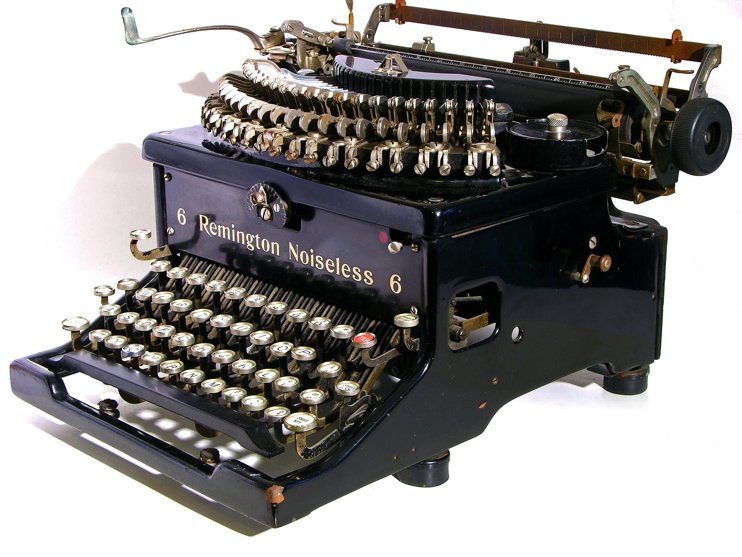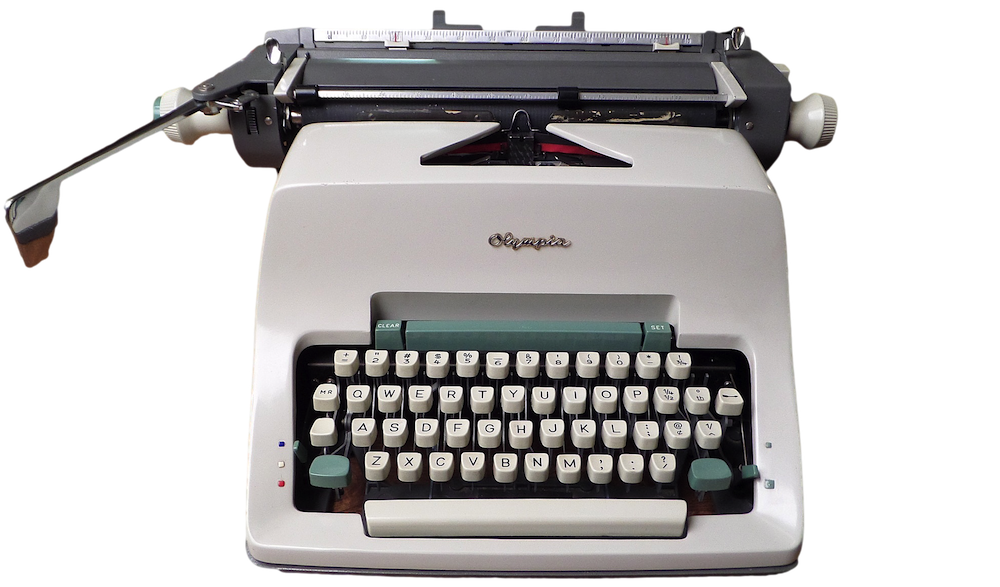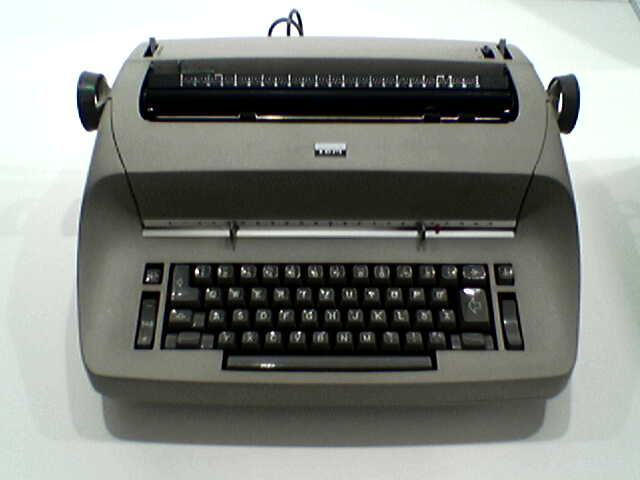First invented in the 1860s, the typewriter was very popular, and used for any type of writing, with the exception of personal letters and correspondence. By the 80’s, typewriters were going out of use after about 100 years due to new technology being invented. Today, typewriters are no longer used like they once wore and are mainly for display.
There were many early devices invented from 1575-1860s that were similar to typewriters. The first commercially sold typewriter however, was the Hansen Writing Ball. It was invented by Rev. Rasmus Malling-Hansen of Denmark in 1865. Five years later in 1870, his invention was first sold commercially. The Hansen Writing Ball was a very popular item in Europe. Malling-Hansen is one considered a candidate of inventing the first electric typewriter because of the solenoid escapement in his device. His daughter, Johanne Agerskov, had written a book in 1865 talking about how the original Hansen Writing Ball was made of porcelain. Malling-Hansen had continuously experimented with the placement of keys to make for the fastest writing speed. This invention is also considered the first that made it easier to type on than writing by hand. Throughout the 1870s and 80s, Malling-Hansen continued to improve his device to make it the best and easy to use as possible. At the world exhibition in Vienna in 1873 and then a later one in Paris in 1878, the first place prize was given to Malling-Hansen at both.
Christopher Latham Sholes, Frank Haven Hall, Carlos Glidden, and Samuel W. Soule all worked together to invent the Sholdes and Glidden Type-writer in America in 1868. Sholes claimed their design looked like a pan and a kitchen table put together, and disowned it. Matthias Schwalbach made a working prototype of their design, and then was able to patent. Densmore and Yost bought the rights from Schwalbach for $12,000, and was able to make an agreement with E. Remington and Sons to sell the machine and call it the “Sholes and Glidden Type-Writer.”
On March 1, 1873, E. Remington and Sons began selling the first device using the term “typewriter” that also used the QWERTY keyboard. This keyboard is still mainly used today, and became one of the reasons the first typewriter sold so well. Many other companies began manufacturing their own typewriters using the QWERTY keyboard soon after.
Typewriters became more and more popular, and more companies began manufacturing them. The idea of the mechanical typewriter had basically become a standardized design around 1910. While every manufacturer produced a different typewriter, they all had the same basic layout and concept. Typewriters at this time had type-bars each key was stuck to. If the key was hit properly, the letter would come up on the paper, and a small bell was there to be struck when reaching the end of a line. It was a bit of a complicated process, but still worked nevertheless.
In 1893, the Daugherty Visible was first introduced. This was one of the first models in which you could see the text as it was being typed, unlike earlier models. Also, this was the first standardized model with a four-bank keyboard. When the Underwood released two years later, it was much more popular than the Daugherty Visible and had the same four-bank keyboard and visible text features.
The shift key was first introduced in 1878 with the Remington no. 2 model. The shift key got its name because it had the ability to shift either the basket of type-bars or the paper-holding carriage. This was first introduced mainly so letters could be put in upper and lower case, but also made it possible to use the percentage, ampersand, or other special symbols with numbers. Previously, most typewriters had an extra keyboard for upper case letters. The shift key made for a lower manufacturing cost and an easier device for any typists. It did, however, require extra force, and was usually used with the little finger, so the “shift lock” key was eventually invented as well. Some models even had a double shift that made it possible for a key to have three functions. The Barlet is the most well known model that did this. The tab (tabulator) key was also invented in the late nineteenth century and proved to be a helpful addition to typewriter models.
Wellington Parker Kidder developed the first “noiseless” typewriter design in the early 20th century. In 1917, the first model was manufactured and marketed by the Noiseless Typewriter Company. Later, this product was transferred over to Remington in 1924. Underwood began manufacturing their own noiseless typewriter in 1929 after making an agreement with Remington. These models were most popular during the 1930s and 40s, and continued to be manufactured up until the 1960s. It was not entirely noiseless, just much quieter than the original “clack” sound typewriters made.
Blickensderfer Manufacturing Company produced the first electric typewriter in 1902. Rather than the typical individual typebars, the Blickensderfer typewriters used a cylindrical typewheel. Originally this model of typewriters was not all the successful commercially. In 1910, Charles and Howard Krum furthered the electric typewriter when they patented their teletypewriter. They called their device the Morkrum Printing Telegraph, and it was used as the first commercial teletypewriter between Boston and New York City in 1910 on the Postal Telegraph Company lines.
In 1903, the first Olympia typewriter model was invented, but was not successful until twenty-years later with the Olympia Model 3. These typewriters were used mainly in Germany until the 1950s to 70s when they began manufacturing them in Canada, Ireland, Mexico, and Chile as well. Of all their models, the portable ones were the most successful and sold the best. They were well known for having different designs than most, with different brightly colored models and other features.
The first practical power-operated typewriter was invented in 1914 by James Field Smathers. His model became successful in 1920 before he gave the rights to the Northeast Electric Company three years later. Northeast’s motors also produced the 1925 Remington Electric Typewriters. When they proposed to Remington for their to be a contract between them after having sold over2,500 electric models, Remington Rand was created in 1927. Northeast then decided to manufacture their own typewriter in 1929, becoming the first to produce an Electromatic Typewriter.
By 1941, there had been many new models of electric typewriters manufactured by a handful of companies. That year, International Business Machines Corporation (commonly known as IBM) first announced their Electromatic Model 04 electric typewriter. Their new model was the first to use the proportional spacing concept. IBM continued to be one of the leading electric typewriter manufacturers along with Remington Rand. In 1961, the IBM Selectric typewriter was first introduced. Instead of typebars, there were spherical elements, also called typeballs, used. This new design became very popular and sold well with its many advantages, one being there was no longer the possibility of keys getting jammed. The Selectric was the main typewriter model used in offices and schools by the 1970s.
The electronic typewriter is the final major development of typewriters. Xerox Corporation introduced their line of Electronic Typewriter in 1981. These sold well because of their daisy wheel mechanism instead of using the typeball. The daisy wheels were considered much easier and simpler to use than the typeball, but were not as durable originally.
In the 1980s, typewriters first began to really go out of use with new technology constantly being introduced. Hardly any companies manufacture them any more, as they are mainly used for display nowadays.







